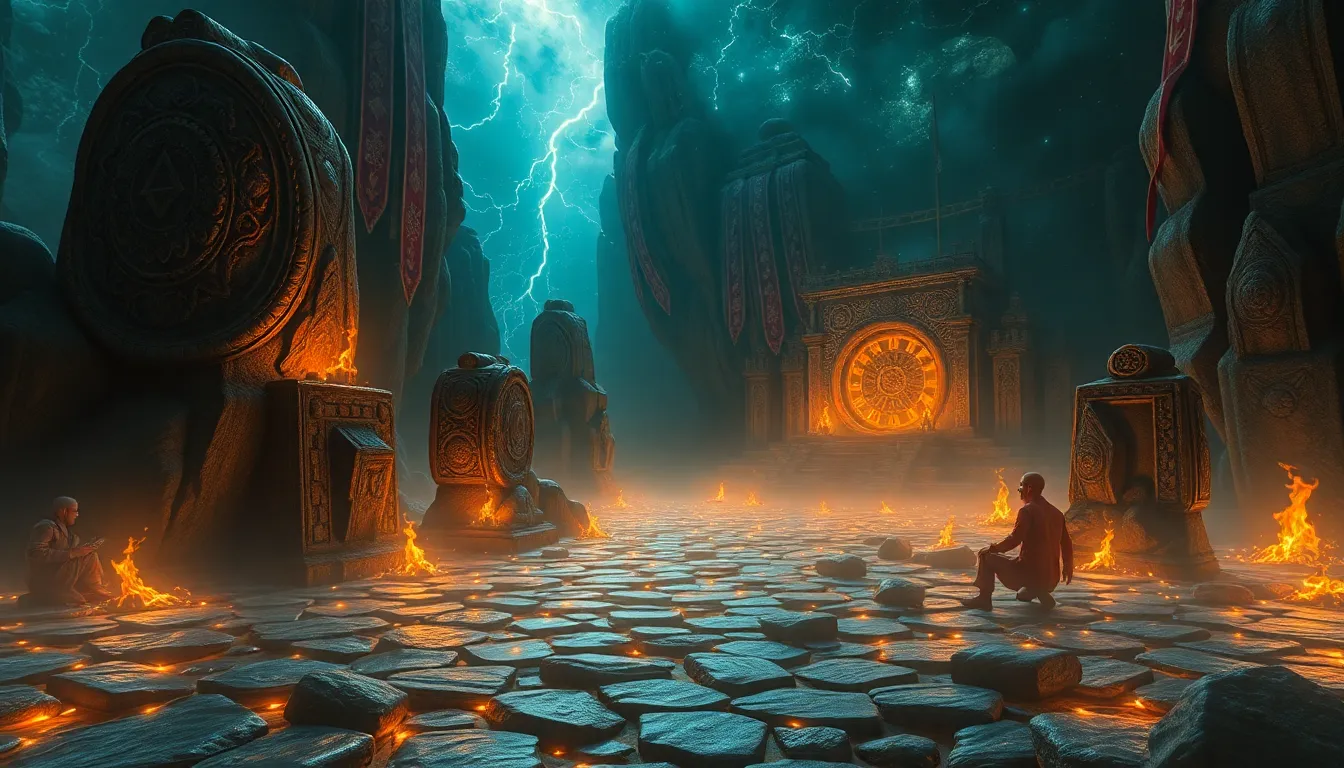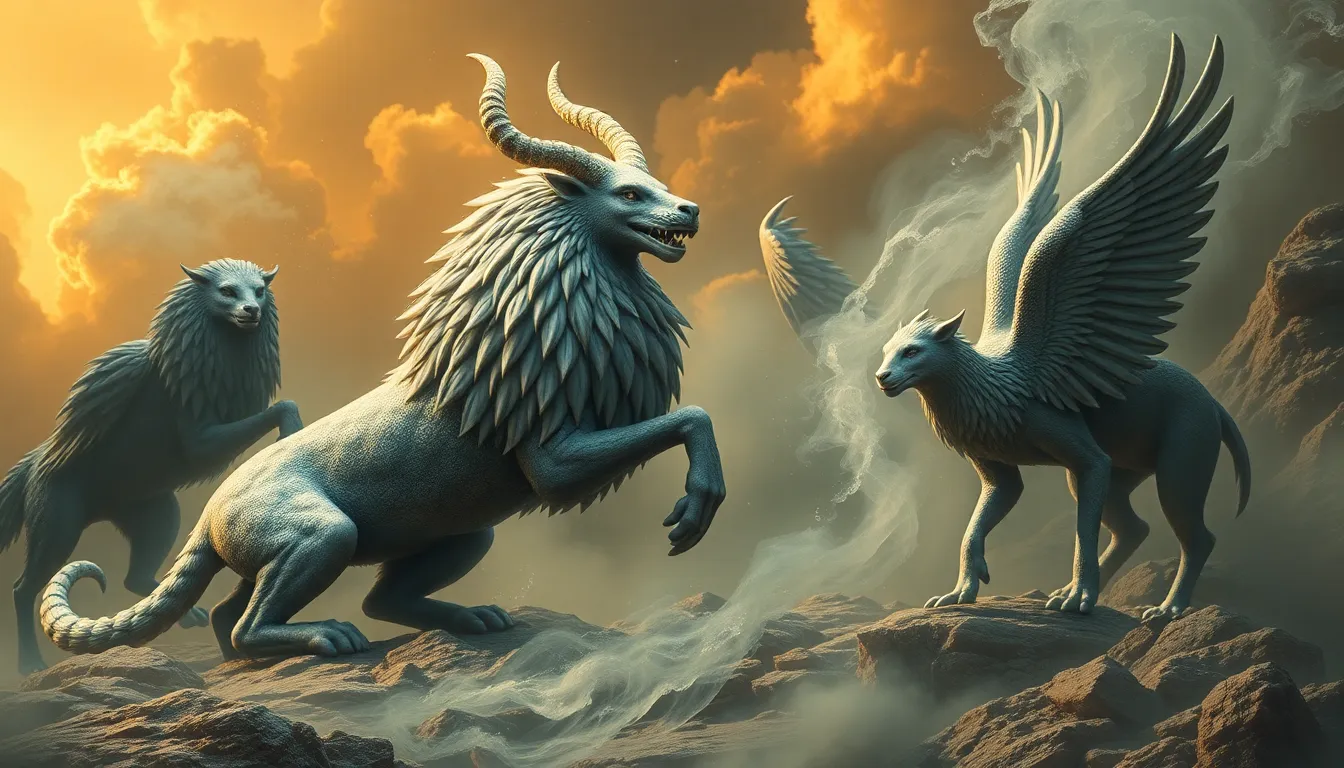Baba Yaga in Films and TV: Exploring the Hag’s Depiction in Modern Media
I. Introduction
Baba Yaga is one of the most iconic figures in Slavic folklore, often depicted as a fearsome witch who lives in a hut that stands on chicken legs. She embodies the complexities of nature and the duality of femininity, serving as both a nurturing figure and a source of terror. Her significance in Slavic mythology is profound, as she represents the untamed aspects of life and the wisdom that can be gleaned from chaos.
This article aims to analyze Baba Yaga’s portrayal in contemporary films and television, exploring how modern media has reinterpreted this ancient figure. Through various adaptations, we can see how her character has evolved, reflecting societal changes and cultural contexts.
II. The Origins of Baba Yaga
The legend of Baba Yaga dates back centuries, with roots in the oral traditions of Eastern Europe. Her character is often depicted as a supernatural being who can help or hinder those who seek her out. Historically, she has been associated with the wild, untamed aspects of nature, often appearing in traditional tales as a guardian of the forest.
Key characteristics of Baba Yaga include:
- Her distinctive appearance, often described as an old woman with iron teeth.
- Her magical abilities, which allow her to fly in a mortar and wield a pestle.
- Her ambiguous morality, as she can be both a villain and a mentor.
Variations of Baba Yaga’s story exist across different Slavic cultures, where she may be portrayed differently based on regional beliefs and societal norms. In some tales, she is a malevolent figure, while in others, she offers wisdom and assistance.
III. Traditional Depictions vs. Modern Interpretations
The classic folklore surrounding Baba Yaga contrasts sharply with many modern adaptations. Traditionally, she was often seen as a threatening figure, representing the dangers of the forest and the unknown. However, contemporary interpretations have shifted this narrative significantly.
Modern adaptations often portray Baba Yaga as a more nuanced character, incorporating elements of empowerment and complexity. This shift can be attributed to:
- The influence of feminist perspectives that seek to redefine female archetypes in literature and media.
- Changes in cultural attitudes towards aging and power, allowing for a more respectful representation of older women.
- The blending of genres, where horror and fantasy intersect, giving rise to new storytelling possibilities.
The cultural context in which these adaptations are created plays a crucial role in shaping Baba Yaga’s portrayal, reflecting contemporary societal values and norms.
IV. Notable Films Featuring Baba Yaga
Several films have included Baba Yaga as a central or supporting character, each offering a unique interpretation of her mythos. Notable examples include:
- Baba Yaga (1973) – An Italian horror film that presents a more sinister version of the character, emphasizing her malevolence.
- The Witcher (2019-present) – In this popular Netflix series, Baba Yaga is reimagined as a complex figure with ambiguous motives, showcasing her as both an ally and an adversary.
- John Wick: Chapter 3 – Parabellum (2019) – Although not a direct adaptation, the film references Baba Yaga in its use of mythological elements, highlighting the character’s cultural significance.
Each of these films contributes to the evolving narrative of Baba Yaga, impacting popular perceptions of her character and solidifying her place in modern storytelling.
V. Baba Yaga in Television Series
Baba Yaga has also made her mark in various television series, expanding her narrative possibilities through episodic storytelling. Some noteworthy shows include:
- Supernatural (2005-2020) – This long-running series features Baba Yaga as a powerful witch, blending horror and humor while exploring her character’s depth.
- Once Upon a Time (2011-2018) – In this series, Baba Yaga is portrayed as a cunning and manipulative figure, showcasing her ability to navigate complex moral dilemmas.
The character development in these shows often allows for deeper exploration of Baba Yaga’s motivations and backstory, presenting her as a multifaceted figure rather than a one-dimensional antagonist.
VI. Themes and Motifs in Modern Adaptations
Modern adaptations of Baba Yaga frequently explore various themes and motifs, including:
- Feminism and Empowerment: Baba Yaga is often depicted as a symbol of female power, challenging traditional gender roles.
- Moral Ambiguity: Her character embodies the complexity of human nature, illustrating that good and evil are not always clear-cut.
- Nature and the Supernatural: Baba Yaga’s connection to the forest and the supernatural highlights the intersection of the natural world with human experience.
These themes resonate with contemporary audiences, allowing for a richer interpretation of her character and the stories surrounding her.
VII. Audience Reception and Cultural Impact
The reception of Baba Yaga’s portrayals in modern media has varied significantly, with audiences responding to her character in diverse ways. Social media and fan communities have played an essential role in shaping perceptions, sparking discussions about her relevance and the meanings behind her adaptations. Key points include:
- Fans often celebrate her complexity, appreciating adaptations that provide depth and nuance.
- Criticism arises when adaptations lean too heavily on stereotypes, failing to capture the essence of the original folklore.
- Baba Yaga’s influence extends beyond specific adaptations, impacting broader pop culture and inspiring new stories and characters.
VIII. Conclusion
The exploration of Baba Yaga’s evolution in modern media reveals a fascinating journey from a traditional folkloric figure to a symbol of complexity and empowerment. Her continued relevance in contemporary storytelling underscores the significance of folklore in shaping cultural narratives.
As we look to the future, it is likely that Baba Yaga will continue to inspire filmmakers and writers, prompting new interpretations that reflect ongoing societal changes and the timeless nature of her story.




